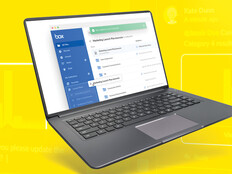Q&A: Wyoming CIO Explains How the State Made Its Move to Google Apps
Appointed to his post in 2011 after Wyoming had inked a contract to become the first state to deploy an enterprisewide Google Apps rollout, CIO Flint Waters oversaw the migration.
While Wyoming initially viewed the move to Google as an email platform, Waters saw much more potential from the Software as a Service offering.
He recently spoke with StateTech Managing Editor Amy Schurr about Wyoming’s cloud initiatives and some turbulence along the way.
STATETECH: How did the Google rollout go?
WATERS: We did not plan it as well as we could have, and weren’t prepared for the impact on our network backbone. When we went to the cloud, we dramatically increased the dependency on our outbound Internet connections.
The Friday before the final phase of the rollout, my staff came to me and said, “We’ve been calculating the data load on our backbone, and we’re fairly sure the network is going to collapse on Monday.”
So Friday afternoon when I had been on the job about 40 days, we redesigned the state’s data network and rebuilt it over the weekend with almost no planning. To solve issues, we reallocated equipment that was heading to different locations around the state, reinvented our network and brought it back up by Monday morning.
We made it, the network ran, and we didn’t fail. But it was baptism by fire.
STATETECH: What was the biggest challenge?
WATERS: Changing from siloed IT to a consolidated approach for the entire enterprise was a huge transition for us. We really underappreciated the impact of a move to the cloud. It has turned into this phenomenal catalyst for completely reinventing our IT culture and changing how we go about doing business.
It facilitated massive shifts in mindset about how to deploy IT resources. We consolidated IT throughout the state of Wyoming in 19 months. There are states that are five years into that, that haven’t moved any people.
STATETECH: Given your state’s rural nature, was it difficult to obtain connectivity?
WATERS: There were quite a few connection challenges in 2011. We created a unified network initiative that consolidates the bidding power of all the state agencies and schools to buy broadband for about 800 sites.
We partnered with broadband providers to build a 100-gigabit backbone and focused on easements along state highways. It actually made it easier for Wyoming to quickly get broadband infrastructure — to go 10 miles in Manhattan, you need permission from how many property owners? In Wyoming, you’re often on a single person’s land.
We went from among the lowest capacity broadband connections in 2011 to the absolute highest in terms of student connectivity.

STATETECH: What other Software as a Service moves did you recently make?
WATERS: We moved off Google Apps for Government to Google Unlimited, and we were the first state to do so. This is controversial because I’m moving out of the exclusive government data centers.
I don’t need government-only cloud because it takes six to eight months longer for innovation to trickle down from commercial solutions.
I sought the advantage I get from going straight commercial — unlimited storage in Google accounts. My agency doesn’t have drive letters anymore. We’ve moved 100 percent to Google Drive, which means my agency has zero cost for storage. You won’t get many government CIOs to do that yet. They’re not ready.
STATETECH: How else does the state use Google technology?
WATERS: Our governor uses Google Hangouts. We streamed the state address out of the legislature on Google Hangouts. We set up our training classroom using Chrome all-in-one devices.
We’re replacing job entry systems and application systems in the Department of Workforce Services with Chromeboxes and Chromebooks. And we’re fully engaged with simultaneous authoring and documents.
That’s a massive game change. Folks are so used to capturing their ideas in a document, routing them to the people who need to see them, waiting for them to come back and then reconciling the differences. The shift is more core mindset.
STATETECH: What other cloud services do you use?
WATERS: We’re moving a fair bit of our virtual infrastructure onto Microsoft Azure, as well as databases. We do a lot of our new development building directly against cloud APIs instead of buying virtual services. This is another area into which most states haven’t yet ventured. Building some systems with Google’s APIs in an app engine makes them immensely scalable.
STATETECH: How has the shift to cloud computing changed staffing?
WATERS: After we consolidated, we designed and implemented our own culture so it’s not a traditional state environment. Age doesn’t matter; we scale by passion.
Now, instead of having a server person who crawls under the desk and replaces the drive, I need a server person who truly understands the security impact of how they’re deploying the solution, who truly understands the privacy impact of how they’re resolving an issue or answering a challenge from an agency.
It’s a great opportunity for us to get more invested in what we do best, because I don’t do power and cooling better than the industry. In terms of delivering pure solutions to citizen needs, that’s our home-run swing.









